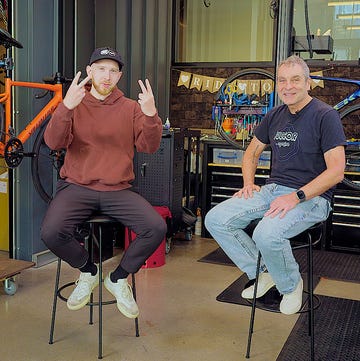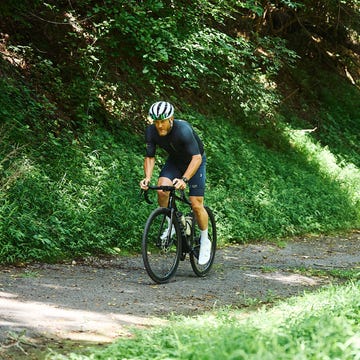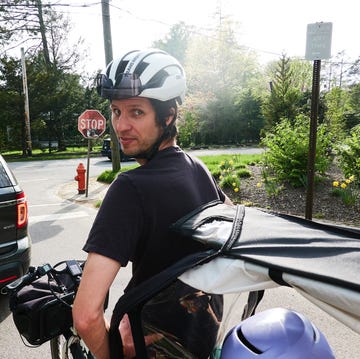Specialized launched the latest generation of its Levo e-mountain bike today. It’s a superb bike—the best e-MTB I’ve yet ridden—but it has one feature that is sure to be VERY controversial.
The feature and related controversy that is sure to follow touch on many topics. Chief among them is trail access.
All mountain bikers know the forces at play that seek to prevent, restrict, or eliminate mountain bike access to trails. Additionally, many e-mountain bikers have encountered riders who prefer unpowered mountain bikes trying to impose these restrictions, striving to avoid sharing trails with e-bikes.
All forces trying to keep mountain bikes and e-mountain bikes off trails will try to use this new feature of the Levo 4 for their nefarious purposes.
But I’m here to say that this feature, despite what the critics might say, will simultaneously have almost zero effect on the Levo 4 on trails while massively improving the rider’s experience.
The feature is this: Levo 4s sold in the USA, and only in the USA, have a menu command that sets the motor assist cutoff to 16, 20 (Class 1), or 28 (Class 3) MPH. This setting is not sticky—the bike resets to the 20-mph cutoff every time it is powered off—and when set to the 28-mph cutoff, it is announced in a large font on the bike's display.
Every trail system open to e-mountain bikes I know of is restricted to Class 1 bikes with a 20mph cutoff, making the Levo 4 in Class 3 mode verboten.
Specialized told me this setting was added because riders who ride to trailheads on streets often bounce off a 20-mph assist cutoff. As someone who usually rides my test e-bikes from my house to trailheads on streets, I can confirm that this happens, and it is super annoying.
The first thing I did on my first test ride on the Levo 4: I enabled Class 3 mode. It is awesome—I wish every e-MTB offered it.
I know there will be much pearl-clutching and whataboutism from e-haters predicting destruction and doom because everyone with a Levo 4 will be roaring around on singletrack at 28 MPH.
These people are monumentally clueless and don't understand mountain biking or riding an e-bike.
First, unless a singletrack trail has long sections of straight, steep, and smooth downhill, most riders rarely hit a 20-mph e-bike assist limit on singletrack. For context, at the 2024 cross-country world championships, men's elite second-place finisher Victor Koretzky averaged almost 12 mph with a top speed of around 25 mph—a peak he would only hit for a few moments on one downhill per lap. Koretzky is considered a very skilled descender too.
If the very best racers in the world are averaging about 12 mph going all out in their biggest race of the year, we can very safely assume that everyday riders are going a lot slower, even if they are riding e-bikes.
I say that with some authority because I live in Durango, Colorado, and ride the same trails as many speedy pro mountain bikers. I've compared times: Even on an e-bike, I am not as fast on the climbs or the descents as the fast riders in town are on their unpowered bikes.
Plus, a 28-mph limit is meaningless if it takes an e-bike’s high power mode plus a lot of effort on a rider's part to average even single-digit speeds on singletrack climbs.
In the name of, uh, science, I set the Levo 4 in Class 3 mode and rode some local singletrack trails.
Aboard the Levo 4 (set to Class 3 with Trail assist mode), and with an average heart rate of over 150 bpm, I maintained about 8 mph on an approximately one-mile singletrack climb with about 500 feet of gain. I tried again in Class 1 mode: same speed. By the way, an 8-mph average speed wouldn’t make me KOM on the climb’s unpowered Strava segment.
With the bike in Class 3 mode, I didn't beat my fastest unpowered time on the following descent, either.
So, my uphill time in Class 3 mode was the same as it was in Class 1 mode, and my downhill time was slower than my best time on an unpowered bike.
Another reason I don't think the 28-mph cutoff is an issue is that a higher assist cutoff has a massive energy demand. The Levo 4—which weighs 52 pounds, has no aerodynamic considerations, and rolls on thick, knobby, and sticky rubber tires—gulps down battery in Class 3 mode.
I found even a couple miles on flat streets in Class 3 mode will deplete 10 or more percent of the Levo's battery.
Even in the unlikely case that a rider could pedal continuously at speeds over 20 mph on a singletrack trail, they would be setting themselves up for an unsatisfactorily short ride.
I know there will be cases where a skilled rider on a trail with a favorable profile would be able to ride faster on a Levo 4 because it offers the (optional) Class 3 cutoff than they would if the bike was locked to Class 1 like other e-bikes. It will be a hot topic among those who care about Strava’s e-bike segment leaderboards.
But in my expert opinion, based on over 35 years of riding mountain bikes and 30 years as a product tester, is that such situations on the trails are infinitesimally likely. Meanwhile, for the Levo 4 rider who pedals to the trailhead, having the Class 3 option provides a huge experiential improvement.
The only controversy will stem from the extremes some may take to use the Levo 4’s Class 3 setting to exclude e-bikes from trails.

A gear editor for his entire career, Matt’s journey to becoming a leading cycling tech journalist started in 1995, and he’s been at it ever since; likely riding more cycling equipment than anyone on the planet along the way. Previous to his time with Bicycling, Matt worked in bike shops as a service manager, mechanic, and sales person. Based in Durango, Colorado, he enjoys riding and testing any and all kinds of bikes, so you’re just as likely to see him on a road bike dressed in Lycra at a Tuesday night worlds ride as you are to find him dressed in a full face helmet and pads riding a bike park on an enduro bike. He doesn’t race often, but he’s game for anything; having entered road races, criteriums, trials competitions, dual slalom, downhill races, enduros, stage races, short track, time trials, and gran fondos. Next up on his to-do list: a multi day bikepacking trip, and an e-bike race.


















